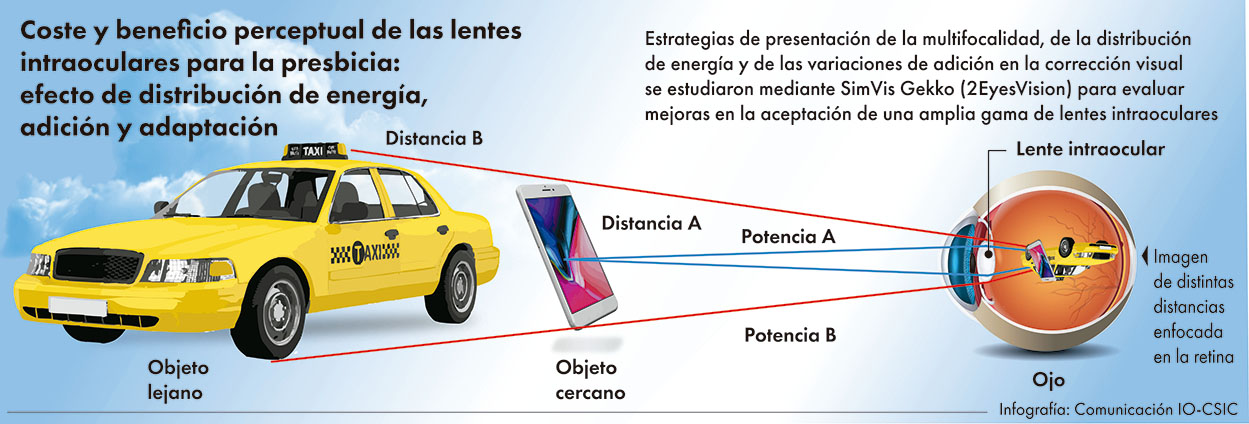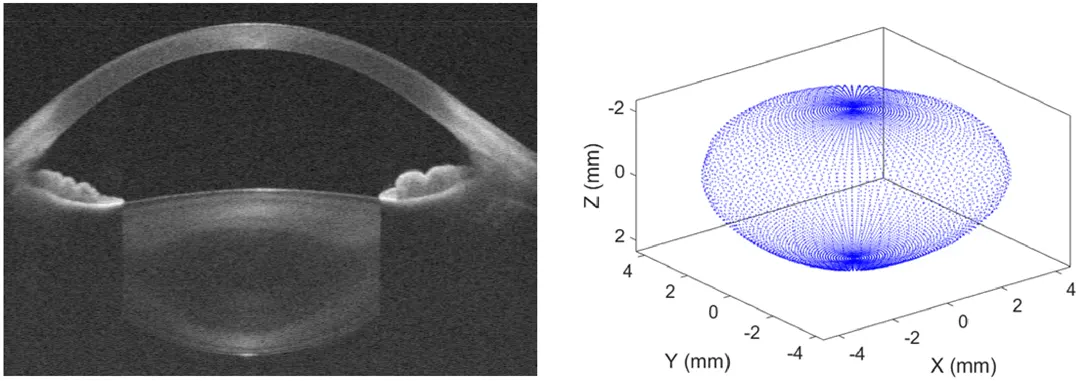Perceptual cost and benefit of presbyopia-correcting intraocular lenses: effect of energy balance, addition, and adaptation
- The study shows that the subject’s response to the different lenses is influenced by the adaptation process that precedes each test.
- The neural mechanisms underlying the visual processing of different images, provided by these corrections, are still not fully understood.
A team of researchers from the Daza de Valdés Optics Institute and the company 2EyesVision has published a pioneering study in the journal Biomedical Optics Express about their experiments on the perception of bifocal intraocular lenses (IOLs) used to correct presbyopia. The work explores how optical power distribution and addition in bifocal lenses influence the visual quality perceived by patients, both at far and near distances. Using the SimVis Gekko visual simulator, the researchers have demonstrated that in simulation tests of different lenses, prior preparation is important to significantly improve the acceptance of multifocal lenses. This study offers valuable tools for lens designers and clinicians to optimize the adoption of these visual solutions.
Latest news
“Empowering Talent” Workshop Strategies for bias-free processes
The workshop on unconscious biases will be taught (in English) by Mahmoud Assy, an expert in Diversity, Equity and Inclusion. This activity will be taught within the framework of the European SYMPHONY project Madrid / March 5, 2025"Empowering Talent" seeks to analyze...

Article: Eduardo Esteban-Ibañez, Enrique Gambra, Yassine Marrakchi, Lucie Sawides, and Carlos Dorronsoro “Perceptual cost and benefit of presbyopia-correcting intraocular lenses: effect of energy balance, addition, and adaptation.” Biomedical Optics Express Vol. 16, Issue 2, pp. 849-871 (2025)
IO-CSIC Communication
cultura.io@io.cfmac.csic.es
Co-axial acoustic-based optical coherence vibrometry probe for the quantification of resonance frequency modes in ocular tissue
Madrid / December 19, 2022An international team with the participation of the Institute of Optics has presented in the journal Scientific Reports a...
Estimation of the full shape of the crystalline lens in-vivo from OCT images using eigenlenses
An international research team has developed a new method to estimate the full 3D shape of the human lens in vivo, using images from optical...
The Institute of Optics on the International Day of Women and Girls in Science 11F
The IO-CSIC researchers have participated as every year in the celebration of 11F with numerous talks and visits to educational centers where they...





